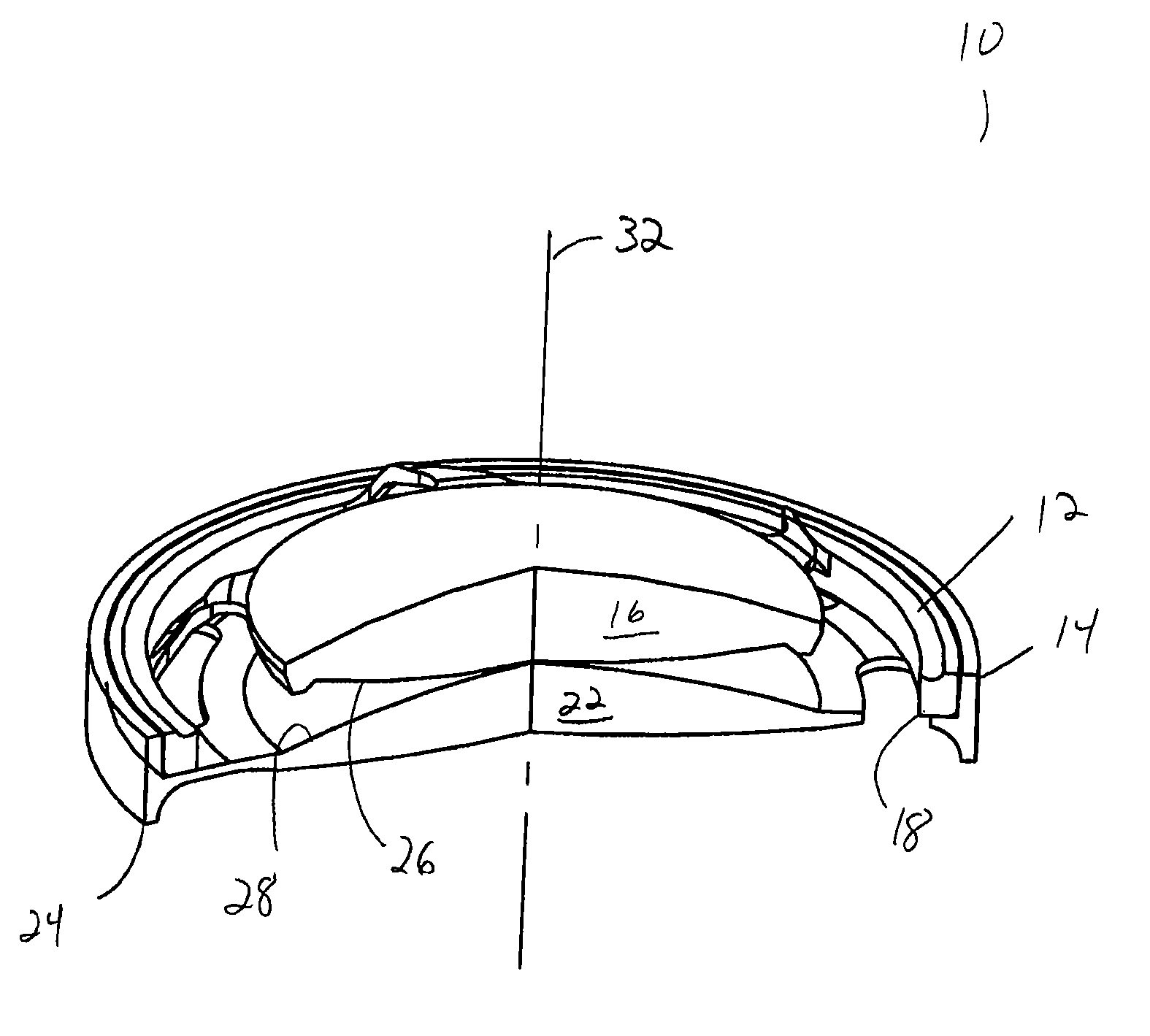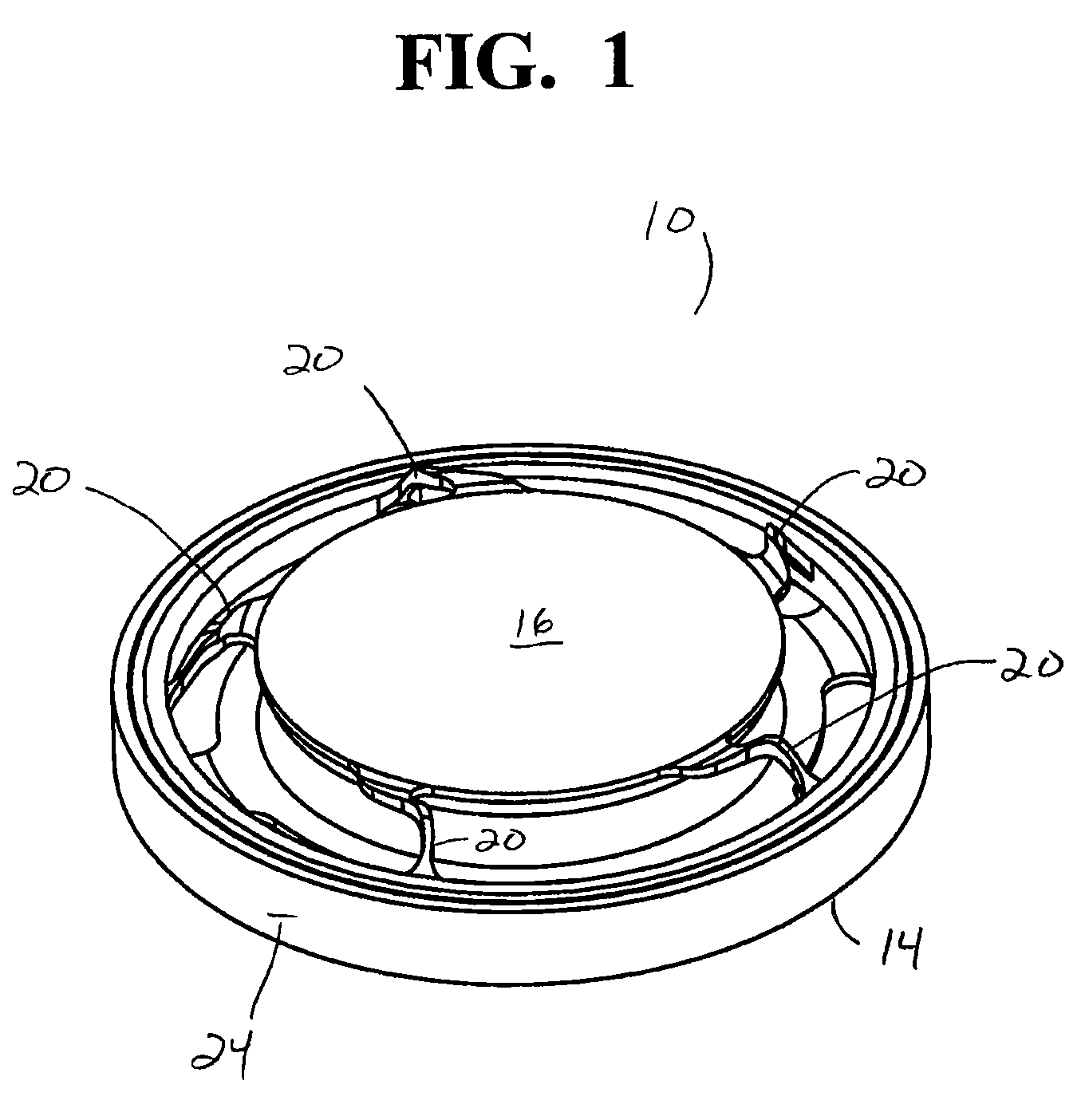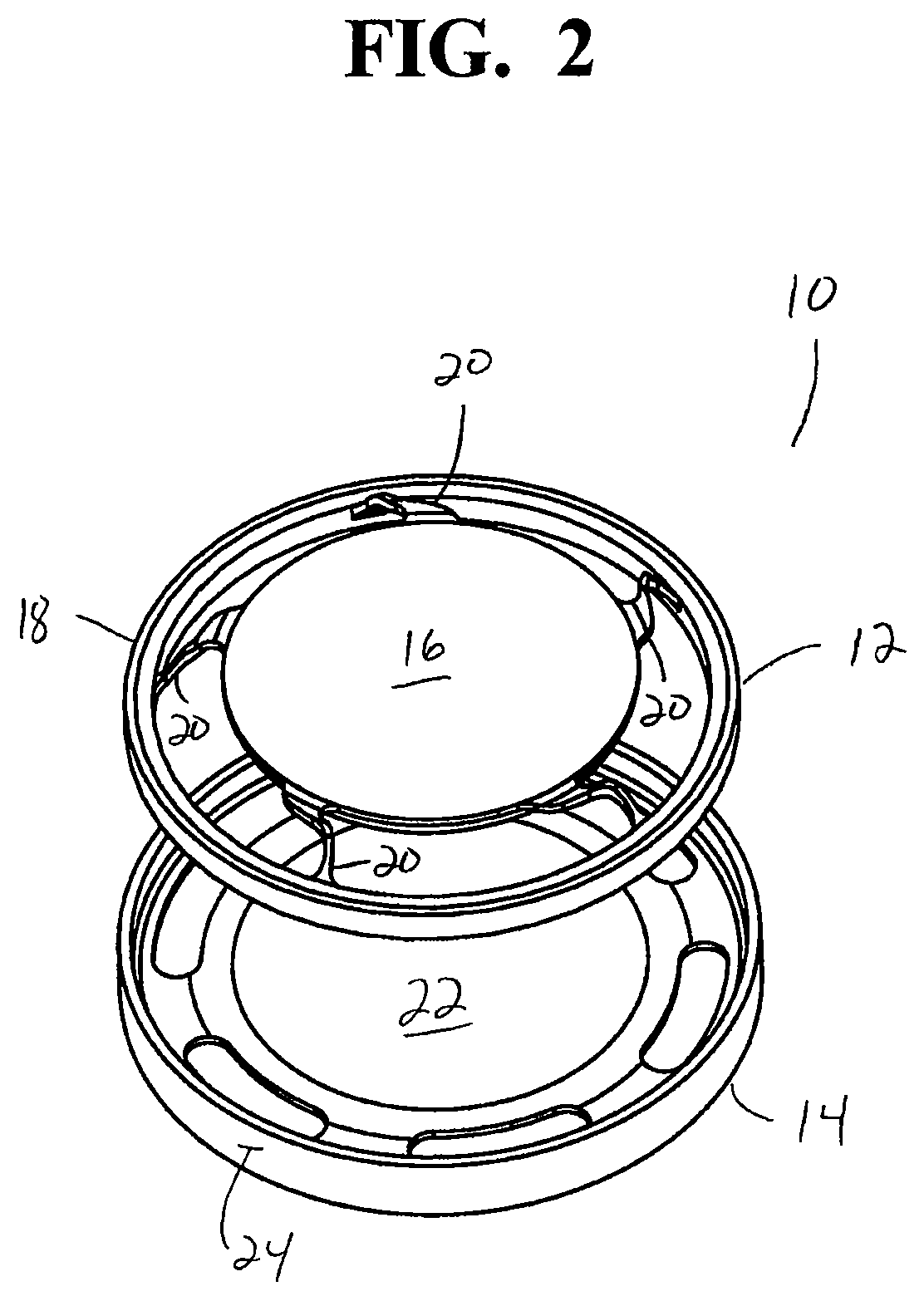Accommodative intraocular lens system
a technology of intraocular lens and lens system, which is applied in the field of intraocular lens, can solve the problems of deteriorating vision, affecting and affecting the function of the lens, so as to achieve the effect of altering the refractive power of the lens system
- Summary
- Abstract
- Description
- Claims
- Application Information
AI Technical Summary
Benefits of technology
Problems solved by technology
Method used
Image
Examples
Embodiment Construction
[0021]The power of a lens surface is primarily determined by two physical parameters, the difference in refractive indices between the lens and the media in which the lens is submersed (e.g., air or aqueous humor) and the radius of curvature of the lens surface. Each of these parameters affect how much light rays are bent at the lens surface and therefore, determine the optical power of the lens.
[0022]As best seen in FIGS. 1 and 2, lens system 10 of one embodiment of the present invention generally consists of anterior lens 12 and posterior lens 14. Anterior lens 12 contains anterior optic 16 connected to anterior peripheral ring 18 by a plurality of haptics 20. Anterior lens 12 can be made in a single piece from a deformable material such as silicone, hydrogel or soft acrylic. Posterior lens 14 contains anterior optic 22 which can be connected to and integrally formed with posterior peripheral ring 24. Posterior lens 14 can be made in a single piece from a deformable material such ...
PUM
 Login to View More
Login to View More Abstract
Description
Claims
Application Information
 Login to View More
Login to View More - R&D
- Intellectual Property
- Life Sciences
- Materials
- Tech Scout
- Unparalleled Data Quality
- Higher Quality Content
- 60% Fewer Hallucinations
Browse by: Latest US Patents, China's latest patents, Technical Efficacy Thesaurus, Application Domain, Technology Topic, Popular Technical Reports.
© 2025 PatSnap. All rights reserved.Legal|Privacy policy|Modern Slavery Act Transparency Statement|Sitemap|About US| Contact US: help@patsnap.com



